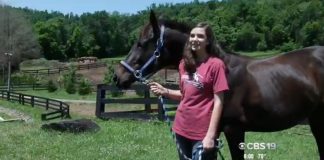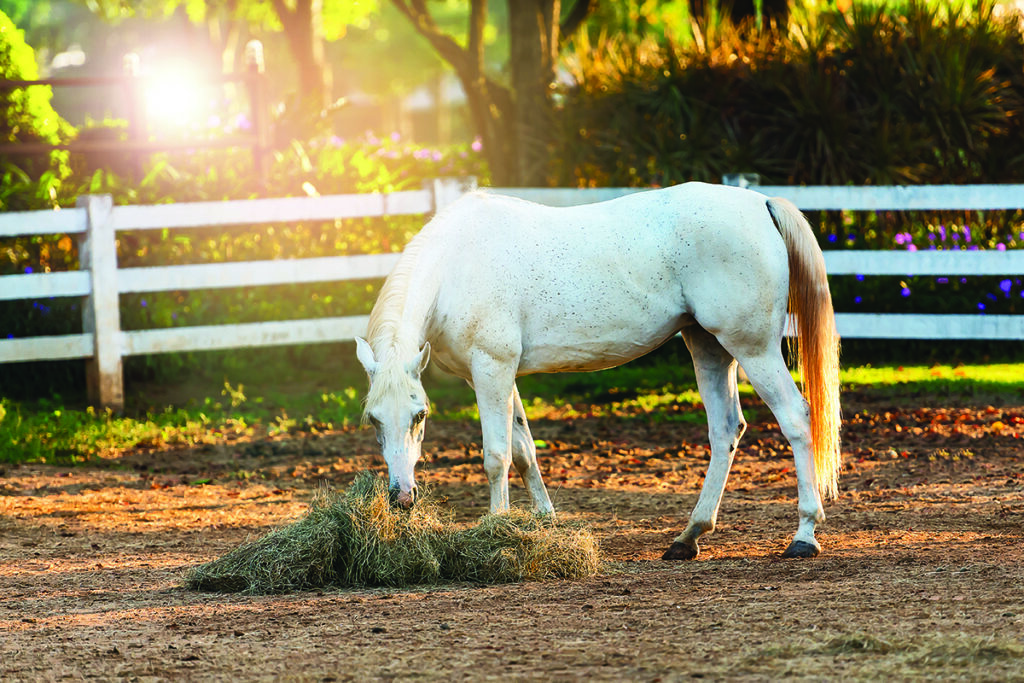
Many horse owners understand the term colic to mean abdominal pain in horses. Although there are several causes of colic, equine impaction colics are one of the most frequently encountered types. Let’s take a closer look at this common cause of abdominal pain to better understand early warning signs, treatment options, and prevention.
Impaction Causes
Due to the length, complexity, and sheer volume of a horse’s digestive tract, an interruption in the flow of material through it can quickly become a very serious issue. A horse’s large colon is 10 to 12 feet long, and along with the cecum, can hold up to 30 gallons of fluid.
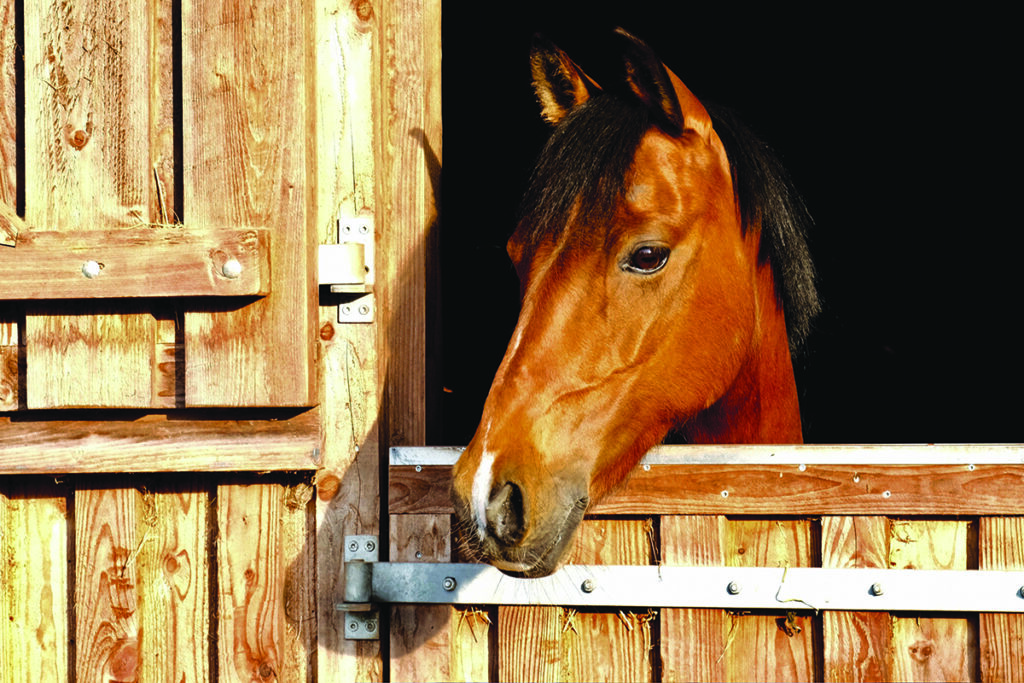
Fitting all this into the horse’s abdomen requires a few anatomic hairpin turns. One such turn is called the pelvic flexure, and this is a classic location for impaction because the diameter of the colon becomes narrower here.
Once a blockage occurs, this creates a backup of material behind it, which swells and stretches the gut. This understandably becomes increasingly painful for the horse.
But why would food become a dangerous clog in a horse’s digestive pipeline? Stress, a sudden change in diet, or an abrupt decrease in exercise (like a change from pasture to stall-bound) can result in a reduction in gut motility, which can predispose a horse to developing an impaction.
Hydration also plays a large role; if a horse is dehydrated, this can also slow the movement of digesta through the colon, sometimes ceasing movement altogether.
Equine impaction colics are often seen in the winter when horses are reluctant to drink icy water. This is a classic example of mild, chronic dehydration leading to this type of colic.
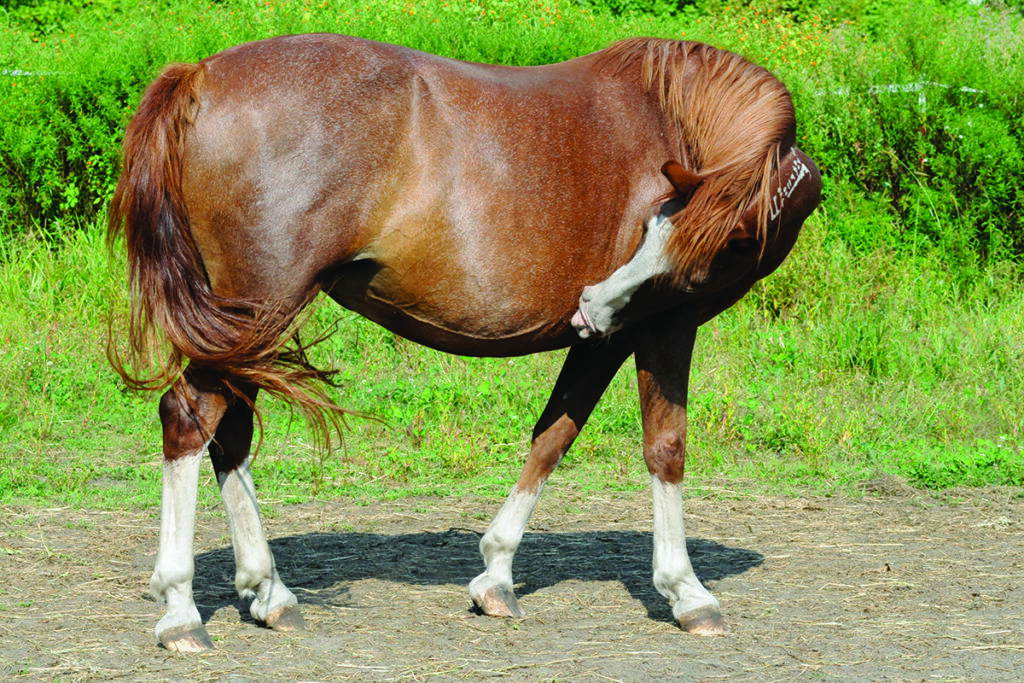
Clinical Signs
Equine impaction colic presents with the same clinical signs as other types of colic, although it may be milder at first and then progress in severity if not treated. An impacted horse may glance at his flank and prefer lying down or act like he can’t quite get comfortable. He may roll or stand at the trough and play in the water without drinking. Usually, impacted horses will not eat.
As time goes by, impaction colic worsens, and clinical signs may become more obvious. The horse’s heart rate will usually be elevated, and he’ll have decreased or absent gut sounds. His gums may become dry, tacky, and pale. If the horse is stalled, you will notice the absence of any manure.
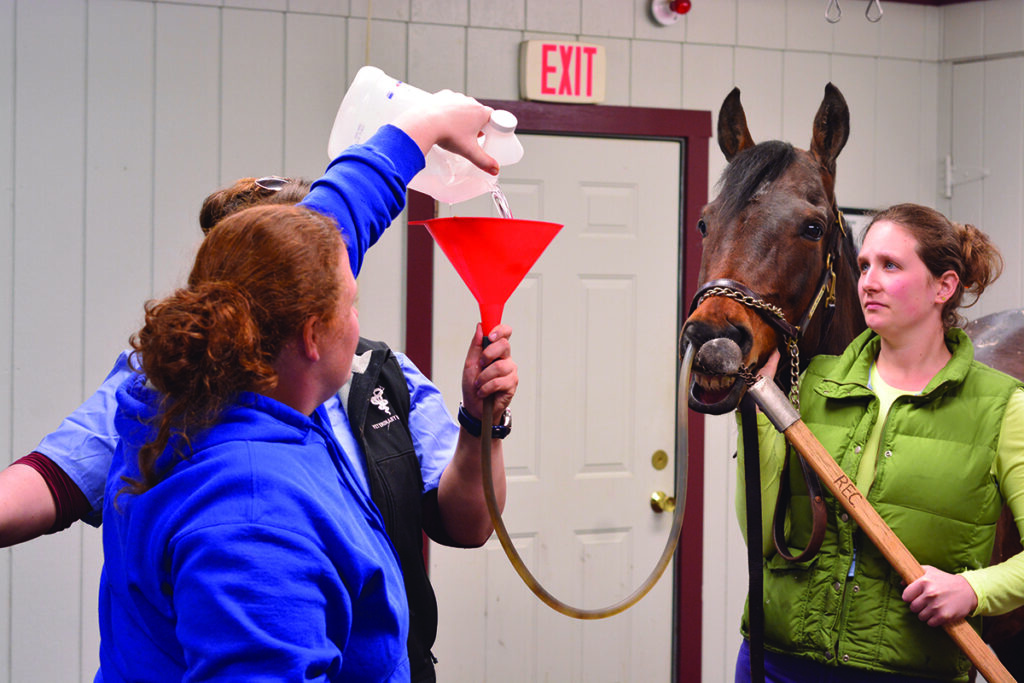
If you notice these signs, have your veterinarian come out as soon as possible. After taking your horse’s temperature and pulse and listening to his gut, the vet will sedate the horse and conduct a rectal examination.
Fortunately, the pelvic flexure of the large colon hangs below the pelvis (hence its name), and an impaction at this location can usually be palpated during a rectal examination. This can help provide a quick definitive diagnosis. However, if the veterinarian cannot feel an impaction in this location, it does not completely rule impaction colic out.
Treatment
Rehydration is the cornerstone treatment for equine impaction colic. Softening up the impaction to get it to move is the goal. This is addressed in two primary ways. First, a nasogastic tube, which is a long rubber tube that is inserted in the nostril and fed down the esophagus into the stomach, is used to administer fluids as well as mineral oil, the ultimate laxative.
Second, an impacted horse is typically given large amounts of intravenous fluids. Pain medication and buscopan, an anti-spasmodic drug, are also sometimes given to help keep the horse comfortable.
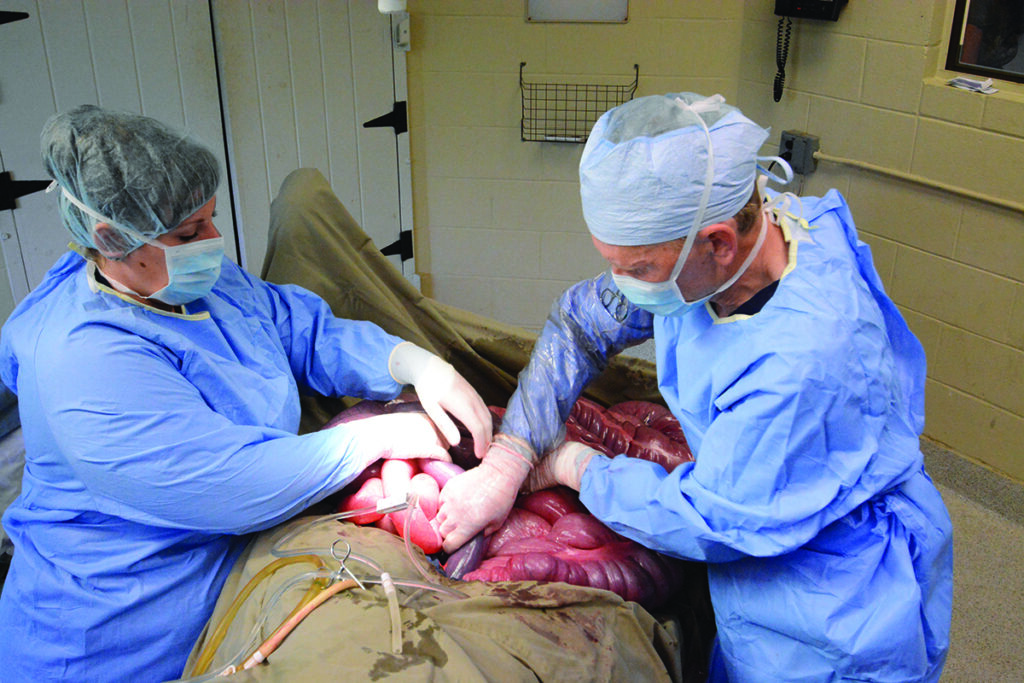
A horse with an impaction should be kept off feed while the impaction is being treated; there’s no point in adding further material to bulk up the digestive tract. However, don’t limit water intake.
Additionally, keep the horse stalled, if possible. This allows you to monitor fecal output. If mineral oil has been given, look for it to pass in 12 to 24 hours. As it typically induces soft, oily stool, it is easy to observe when an impaction has passed.
Occasionally, an impaction is severe enough that it can’t be treated medically, making surgery the only option. During colic surgery, the impaction will be located and removed. Depending on the severity, the wall of the colon may be compromised.
If this is the case, a resection is performed where the damaged section of colon is removed and the two ends are rejoined. These types of surgeries can be complicated, and depending on the extent of the damage to the gut, can have a long recovery time.
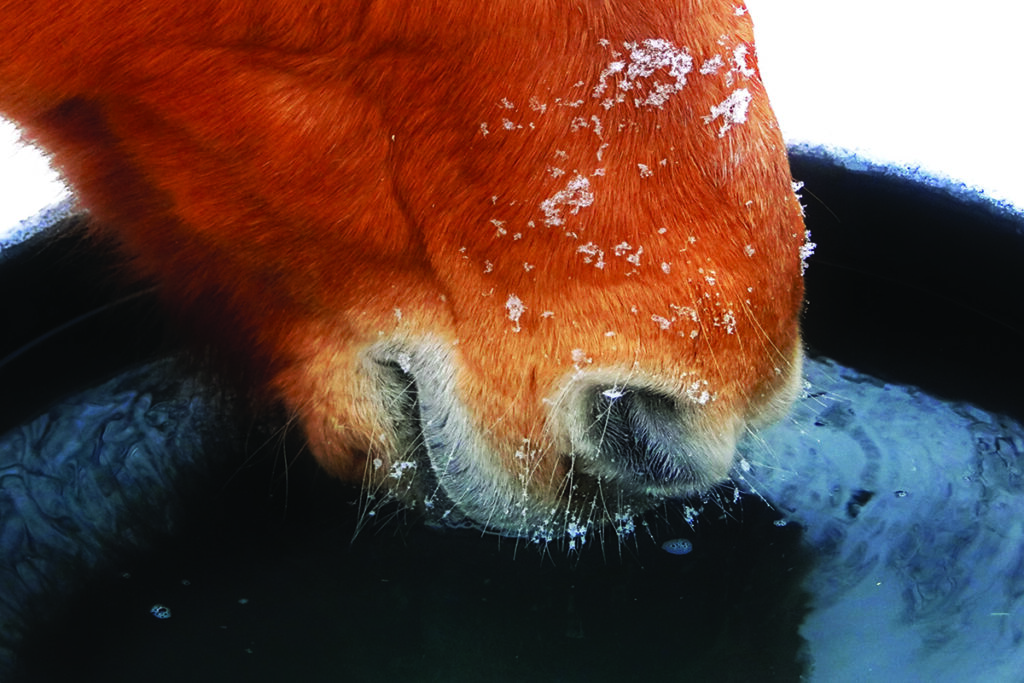
Preventing Equine Impaction Colic
Avoiding any sudden and drastic changes in your horse’s diet will go a long way in helping prevent an impaction. Ideally, the majority of his diet should consist of forage, such as pasture or hay.
Consistency in diet and exercise are key. Good dental health is also important so that your horse can comfortably and efficiently chew his food. Annual dental exams will help ensure his teeth are in the best shape possible.
Perhaps the most vital tip for helping prevent impactions is to make sure your horse has access to clean water at all times. In the winter months, if you are in an area where temperatures fall below freezing, water heaters not only prevent icing, but also encourage the horse to drink when it’s cold out.
If your horse lives in a sandy climate, talk to your veterinarian about supplements that help prevent sand buildup in the gut (see “Sand Colic,” this page).
Common sense and good, practical horsemanship can go a long way in helping your horse avoid an impaction.
Sand ColicOne type of impaction colic is caused by a buildup of sand. Horses that eat hay off the ground or graze on sparse pasture may pick up enough sand or dirt over time to cause sand colic. Be on the lookout for the following signs of sand colic: To identify whether your horse has sand in his gut, your vet may do one or more of the following: To help prevent sand colic, always feed horses from rubber mats or feeders instead of off the ground. You may also consider adding a psyllium fiber supplement to your horse’s diet, which absorbs large volumes of water. By increasing bulk and softening stool, it can help support intestinal regularity and move sand out with the manure. These are generally fed for one week out of each month for as long as needed to clear the sand out of the gut. |
This article about equine impaction colic originally appeared in the September 2021 issue of Horse Illustrated magazine. Click here to subscribe!




